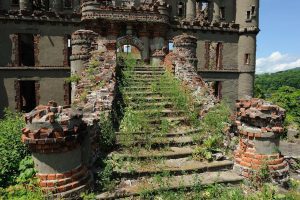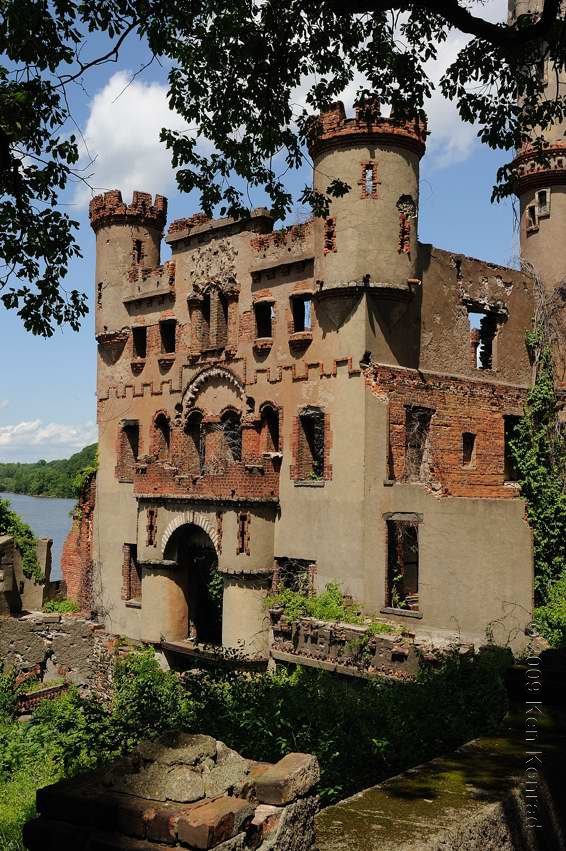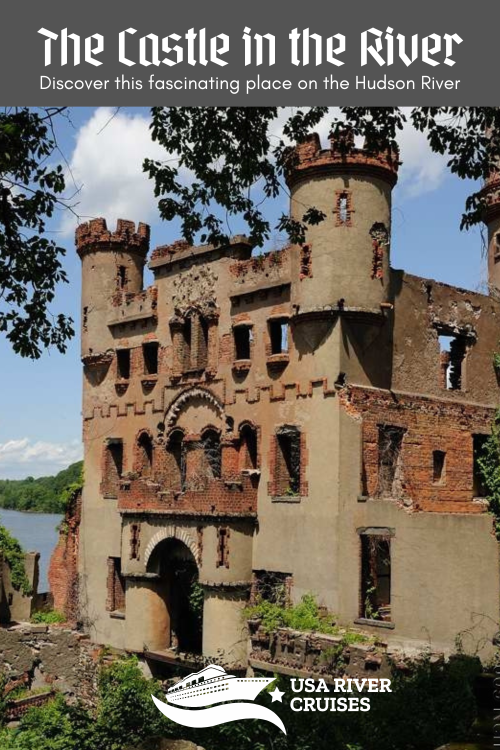
Why is there a castle in the middle of the Hudson River?
Castles were often used throughout Europe to force payment from passing ships along the rivers as a source of income. That form of taxation has long since passed and probably never used in America. So why is there a castle on the Hudson?
It all comes down to chance. A businessman on holiday took a canoe trip on the peaceful waters of the Hudson near Beacon, New York. In the middle of the river was a perfect little island. Once uninhabited and considered haunted by some Native American tribes, it eventually came under the ownership of Mary Taft. This businessman decided it was the perfect spot for him and purchased it from the Taft family – but perhaps not for the reasons you would think.
Francis Bannerman purchased the island to use as a warehouse. He owned a successful surplus goods business in Manhattan, specializing in buying and selling excess military equipment. His inventory had become problematic though, when he purchased so much available military equipment and ammunition following the Spanish American War, that the city wisely required him to look for somewhere else other than downtown New York City to store his large cache of explosive materials.
He started work on the island right away, creating a fantasy island of sorts. He chose to design a Scottish castle on his new island paradise. He had been born in Scotland, immigrated to the US at the age of 3, and had visited Scotland many times. His love of his homeland inspired the design of his new warehouse – Scottish castle decorated with Scottish thistle patterns, ornate gables, and elaborate balustrades. He decorated the side of the castle with huge letters – using it like a gigantic billboard to advertise “Bannerman’s Arsenal.” He also built a beautiful house and garden where his family would spend their summers.

Photo Credit: Bluesguy from NY on Flickr
But all fantasies come to an end. Just 17 years after building the castle, Bannerman passed away. The property remained in the family for many years but it was never quite the same. In 1950, a storm sunk the ferryboat that served the island, and the castle was more or less abandoned by the family. In 1969 a large fire destroyed many of the buildings, and the old buildings began to deteriorate rapidly. The property was eventually turned over to the New York State Office of Parks, Recreation and Historic Preservation and a trust was created to try and preserve this unique property. They were also interested because the site has ties to the American Revolution, as American soldiers used the island in an attempt to prevent the British Fleet from accessing Manhattan by sinking wooden cribs filled with metal tipped pointed logs into the narrowed waterways called “chevaux de frise,” hoping to sink the British ships. The plan was eventually unsuccessful.

Photo Credit: Bluesguy from NY on Flickr
The revival of the property has been somewhat relatively successful though. Rehabilitation of the property began in 1992, but large portions of the walls have collapsed, leaving only one main wall of the Castle standing. This remaining wall is still stunning, and used as backdrops for many fun events. The Castle has a new life, with the Trust holding arts events, small concerts, movie showings, and tours. They are currently fundraising to build funds to attempt to stabilize the remaining section of this fascinating building.
Perfectly situated along the river and in such a romantic setting, the Bannerman Castle is especially picturesque when set against the stunning colors in Autumn. This American castle did not survive as long as many Scottish castles, but even in its ruinous state, it is beautiful.
USA River Cruises offers several different options for cruising the gorgeous Hudson River Valley.
Hudson River Fall Foliage – American Independence
New York City, NY to Albany, NY
- 7 Nights
- October 6, 2025,October 13, 2025,October 20, 2025--
1 more date available. - From $5,870
- American Independence
Save this story to Pinterest:



